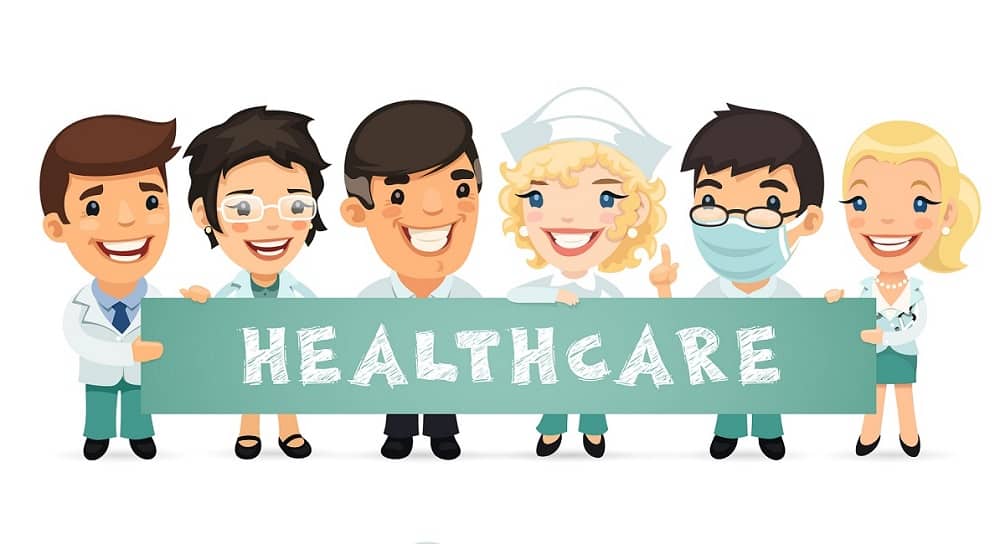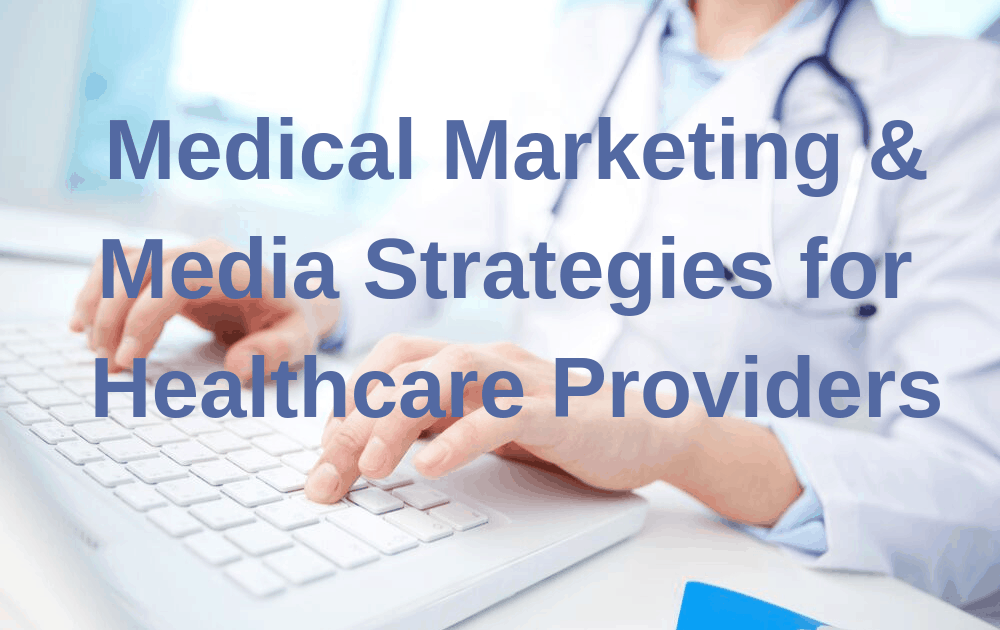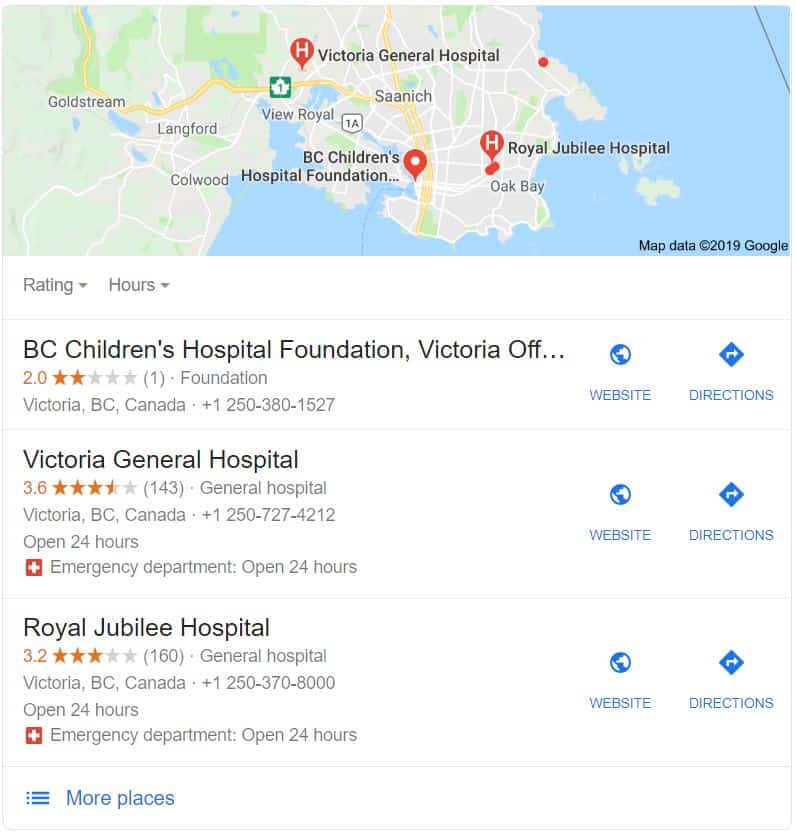Medical marketing has changed along with the policy and technological improvements in healthcare. Pro-modern healthcare legislative measures were implemented to meet the growing demands for healthcare. And thanks to technology, people now have better access to treatment and safer patient care.
Given these changes, it’s a must for healthcare providers to adapt to be able to serve target groups and communicate with a wider audience. Medical professionals not only need to use new tools and methods in practicing medicine, but they also should come up with effective marketing strategies to reach more patients.
Indeed, healthcare marketing is no longer confined to traditional methods like print and TV advertising. It’s imperative for hospitals and private clinics to leverage the power of digital media to grow their patient base and provide patient-centered care.
Here are some of the best medical marketing and media strategies for today’s healthcare organizations and practices:
1. Building an online presence
Nowadays, it’s a common practice for consumers to surf the internet in finding the best possible healthcare services for their needs. From the best beauty doctor in the city to hospitals with the highest customer service satisfaction ratings, the internet offers a multitude of options for searchers.
This makes digital a crucial space for healthcare. As a healthcare provider, you will find it difficult to stay competitive without going digital for your healthcare marketing.
By learning concepts such as search engine optimization (SEO) and local search marketing, you can build a strong presence online.
One major key to building your brand online is by creating a well-designed website that allows potential patients to discover you. Your website should be optimized both for the search engines and for user experience.
As the starting point of your interaction with potential patients, your website needs to be comprehensive and enticing enough to convert visitors into patients. Furthermore, you can increase its chances of showing up in the search results with proper SEO and with the use of digital channels like social media.
RELATED: Get More Patients: Healthcare Marketing Strategies That Work
2. Blogging and content marketing
Medical doctors are among the busiest professionals — being on-call 24/7 and always on-the-go. However, it still pays for medical professionals to share their knowledge and personal experience – like challenges and success stories in their medical field – through blogging.
Due to the popularity of medical dramas, many people have developed some curiosity about the behind-the-scenes of the medical world. This trend is a huge opportunity for medical start-ups to gain traction and for already established medical companies to expand their reach.
Medical practitioners sharing their experiences and perspectives through blogging creates a relatable image for patients. The human side of a doctor’s life can be a breath of fresh air as the medical profession is known to be heart-wrenching and draining.
In addition, blogging serves as an effective healthcare marketing strategy that allows you to build your authority in the field. You can disseminate information and address the common questions in your niche, making your medical company or practice their go-to source for health information.
With the growing popularity of blogging platforms like WordPress and Medium, you can easily reach a wide audience and establish your brand by publishing regular content. It also leads to more engagement and traffic to your medical website, thereby boosting SEO.
RELATED: Long Form vs Short Form Content: Does Word Count Really Matter?
3. Creating lead magnets
Building a website with strong traffic is just the first step to getting leads for your healthcare business. To encourage leads to become consumers, you need to entice them with a lead magnet.
Lead magnets or lead buckets are incentives that savvy medical marketers offer to potential clients in exchange for their contact information such as email address.
Unlike before, it’s now harder to make people sign-up or subscribe voluntarily to receive information from a business. You need to give consumers a compelling reason to give up their details by offering them something mutually beneficial.
A lead magnet or lead bucket can be a piece of downloadable content such as a free PDF file, medical training materials, an eBook, etc. It can also come in the form of a free health consultation, an invite to a niche patient group, or an invite to a health-related workshop or event.
To encourage your potential and existing patients to subscribe to your medical blog, you have to make sure that your lead magnet is specific, relatable, and easily accessible.
4. Local directories for medical marketing
Having a business profile in several local directories is a vital part of digital marketing for medical practices. Leveraging local directories is especially beneficial for those without websites or with sites that have low traffic and engagement.
Popular business directories like Google My Business are designed to help businesses with physical locations (as opposed to internet-based services) to get found online. From the biggest hospitals to start-up clinics, healthcare providers greatly benefit from having a strong local presence.
Local directories allow users to review and rate local businesses including hospitals and private clinics. While these serve as platforms for consumers to leave business reviews, they also provide exposure for a business’s promotions and discounts.
Besides Google My Business, Yelp, Yahoo, and Bing Places for Business are also popular directories that can help promote your medical practice. They are all essential to developing your local SEO strategy.
It’s worthy to note, however, that Google My Business is a top option for business listings as Google remains the most widely used search engine today.
RELATED: Maximize Your Google My Business Listing with New Features in 2019
5. Online reputation management
This is another essential aspect of marketing in medical field. Thanks to directories and social media sites, it’s now easy for patients to create a lasting impact on healthcare providers through online reviews.
It’s important to monitor your online reputation with a proactive approach. This means taking the time to check out what patients are saying about your brand online, and to respond to both positive and negative comments as needed.
Savvy medical doctors and marketers know that it’s costly to neglect a handful of negative feedback about their brand and health services. One detailed negative review can cause both short-term and long-term damage. This is something you cannot afford to have especially if you’re just starting out as a clinic or medical spa.
There are a variety of ways to manage your online reputation in the healthcare space. Aside from objectively responding to online reviews, you can also build your presence on LinkedIn and other social sites.
Furthermore, you can gather existing reviews and study the areas that need improvement in your practice or organization. It pays to invest in your medical staff training as well because many patients prioritize customer service and quality care above accessibility and affordability of care.
6. Medical marketing on social
As previously stated, you can boost your online presence and brand awareness with the strategic use of social media.
Most businesses nowadays leverage the popularity of social platforms like Facebook, Twitter, and Instagram to communicate with a wider audience and build their brand. The most popular social network to date is still Facebook, with more than 2 billion active users monthly as of 2019.
It’s no wonder why a lot of today’s doctors, dentists, hospitals and clinics build their social media presence apart from their websites and local listings in online directories. Savvy medical marketers know that they should meet where their target market is, i.e. social media.
Besides posting engaging, regular content on your social pages, you can also run ads to expand your reach and increase your followers. Facebook, for instance, allows you to run paid ads for health apps, medications, workout planners, and other pharmaceutical products that your clinic or hospital wants to advertise.
Social media marketing has also evolved to cater to the changing needs and preferences of users. One example is the increasing popularity of video marketing.
Now, Facebook and other social channels make it easy for your practice to share short or long health-related videos, which can be informative or promotional in nature. With video marketing, you can further boost engagement and brand awareness among your patients.
RELATED: 6 Ways to Develop Your Facebook Marketing Strategy in 2019
7. PPC campaigns for medical marketing
A well-developed SEO strategy can boost your search engine rankings. But by running paid ad campaigns, you dramatically increase the chances of your website landing in top positions and getting more clicks for target keywords.
Pay-per-click (PPC) is another form of internet marketing that can benefit your medical practice. It’s a strategy which lets you buy leads and traffic to your medical website by paying a fee each time one of your ads is clicked.
PPC marketing may not be the preferred method of growing traffic organically, but it’s the fastest way to put your medical brand in front of your target market.
Conducting PPC marketing through Google ads is the best option. Besides the fact that Google is the most popular search engine to date, it also has massive traffic-generating machinery which enables it to deliver the most leads from your ads.
8. Using chatbots and messaging apps
Ensuring efficient communication with patients is a must for modern healthcare providers. Fortunately, the emergence of chatbots and messaging apps has made this more achievable.
Chatbots serve as online customer services which help businesses interact with customers through a messenger. Besides providing automated customer support, chatbots are also useful for businesses to collect user information and set up meetings with clients.
In the healthcare space, chatbots can be used in a variety of ways. Medical marketers can formulate a chatbot system where healthcare providers and consumers can set up medical appointments for easier transactions. The bots can also send reminders to both doctors and patients for their scheduled appointments.
Healthcare chatbots can provide users with health-related information. And while they certainly cannot give reliable diagnoses the way human doctors do, some bots can provide a likely diagnosis to patients who disclose their symptoms.
RELATED: Marketing a Doctor’s Office: 10 Best Secrets for Success
9. Medical marketing through video content
Studies have shown that 90% of companies that use video content are more likely to influence a consumer’s behavior and buying decision. This is why employing video marketing is essential to your medical marketing strategy.
Video is increasingly becoming a more preferred content format than static or image-led content. There’s a reason why YouTube is considered the second largest search engine next to Google. Many businesses, marketers and content creators leverage the platform for marketing and money-making opportunities.
Other popular social networks like Instagram, Facebook and LinkedIn also favor videos, making them appear in the users’ feeds more prominently than ever before. And because videos are visually engaging and easy to digest, they tend to be the most shareable content online.
Unfortunately, video marketing is still underutilized in the healthcare field. A lot of hospitals and private practices are missing out on the opportunity it provides.
On the other hand, doctors, dentists and other medical professionals who utilize videos for promoting their services enjoy higher ROI, increase patient engagement, and enhance their reputation.
Conclusion
The healthcare sector is evolving and still has a long way to go when it comes to modern advertising.
The industry in general still often relies on traditional medical marketing and media. But with technological innovations and growing popularity of digital marketing channels, healthcare organizations and practices are expected to keep up.
Knowing the best online tools and platforms to use for healthcare marketing will lead to higher success of your current and future marketing campaigns. Furthermore, it will determine the sustainability of your healthcare business or organization over the long term.
Need help with online marketing for your private practice? Feel free to reach out to our team to discuss your website needs and marketing goals. From SEO and PPC to content marketing, StepForth Web Marketing will strive to meet your specific needs.
In addition, our sister company, First.Dentist Web Design & Marketing is 100% focused on marketing dental practices.
Give us a call or request for a one-time consultation with StepForth’s CEO, Ross Dunn. Similarly, you can book a free consult with First.Dentist for your dental marketing needs.





